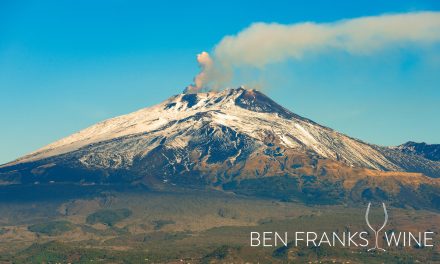In this exclusive interview, Ben Franks talks to Barney Wilczak, distiller and proprietor at Capreolus Distilley in the Cotswolds. Capreolous is behind England’s finest Eau de Vie spirits, so how does Barney go about making his drinks a cut above the rest? And what drives him to do it?
Earlier this year I asked whether there’s a space from premium eau de vie in the UK? In that article I called out Capreolus Distillery’s Barney Wilczak as one of the leaders in the field, certainly for quality. In fact, I think he is one of the finest distillers I’ve ever met. So as a follow on I wanted to chat to him in more detail about how he crafts this series of wonderful colourless fruit brandies and why he does it. At the end of our chat you can read my reviews on a series of Capreolus’ spirits that Barney kindly gifted following our chat.
When I spoke to Barney in March we delved into more than spirits you drink and dove into the spirit of work ethic, the philosophy of taste, and how much these drinks can elevate your experience of a moment in general. There was real synergy in our shared passion for taste, so much so we lost track of time and chatted over many things, which I’ve tried to distil for you here. I am sure you’ll find Barney’s thoughts as fascinating and engaging as I did, and I fully encourage you to try his eau de vie and experience the work that goes into his drinks.
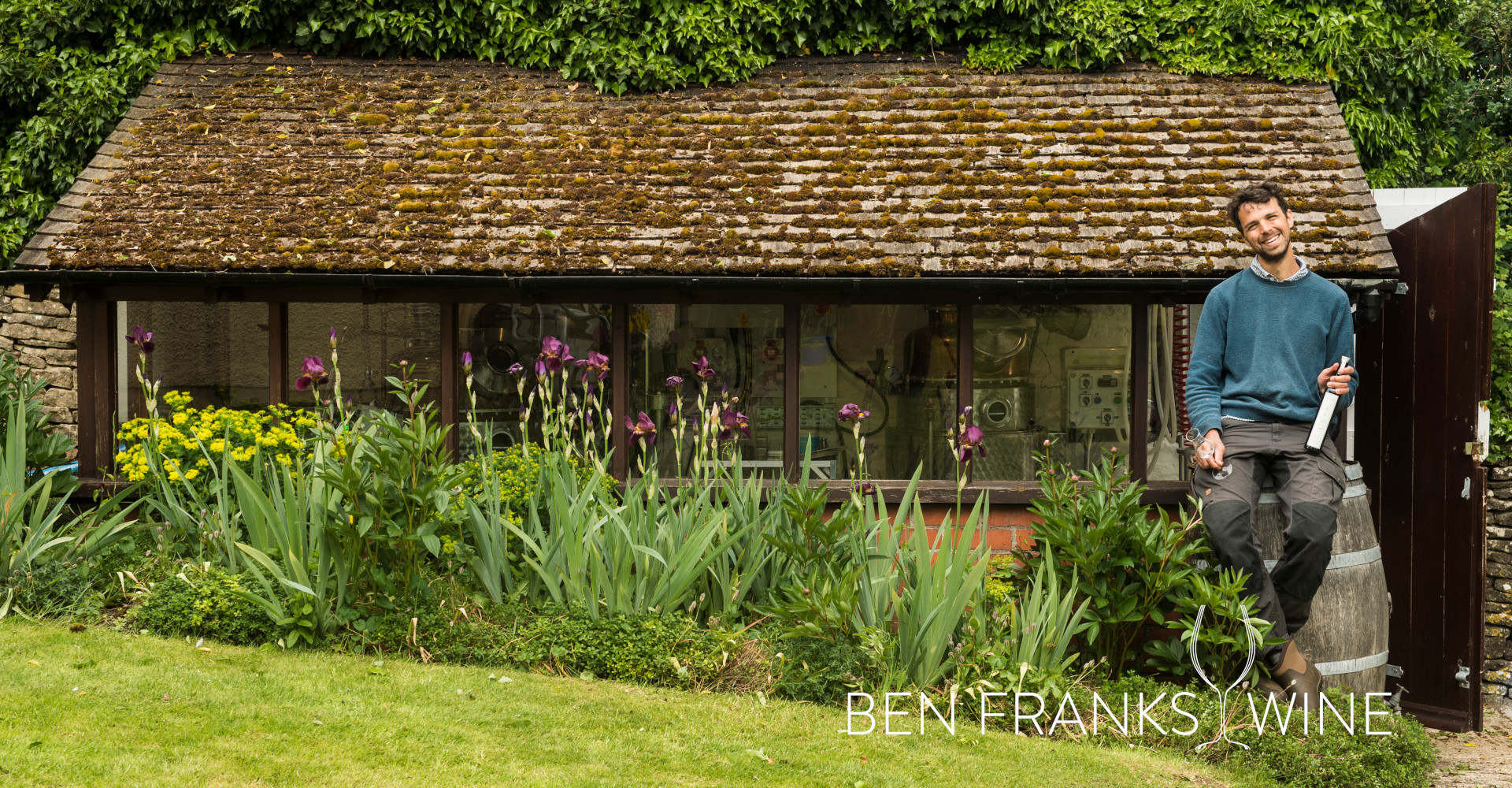
Barney outside his distillery in the garden.
We set-up for our chat whiling away the afternoon, with Barney in his distillery surrounded by pot stills and tanks, and me in my wine shop. After reminiscing about the first time we met at Calcot Manor in Tetbury, we dove straight into the elephant in the room – the small space around him that felt more like an artist’s studio than the industrious type distilleries I was used to seeing.
‘The distillery is a seven and a half square metre greenhouse run on household power and we process fruit in a 0.2 acre garden. We’ve hand-graded fifty tons of fruit this year.
‘We only work with local fruit, and that was the choice early on. It’s very easy to say we work in a terroir-driven way when we work in an amazing food-breeding region. We only source from fifty miles around and the fruit arrives only when it’s absolutely on that day of perfection. That’s logistically challenging but it means we work with only the best fruit, which we check and hand grape for ripeness, over or under; we run through the trays of fruit with our fingers and remove every bad berry, every stalk, every leaf.’
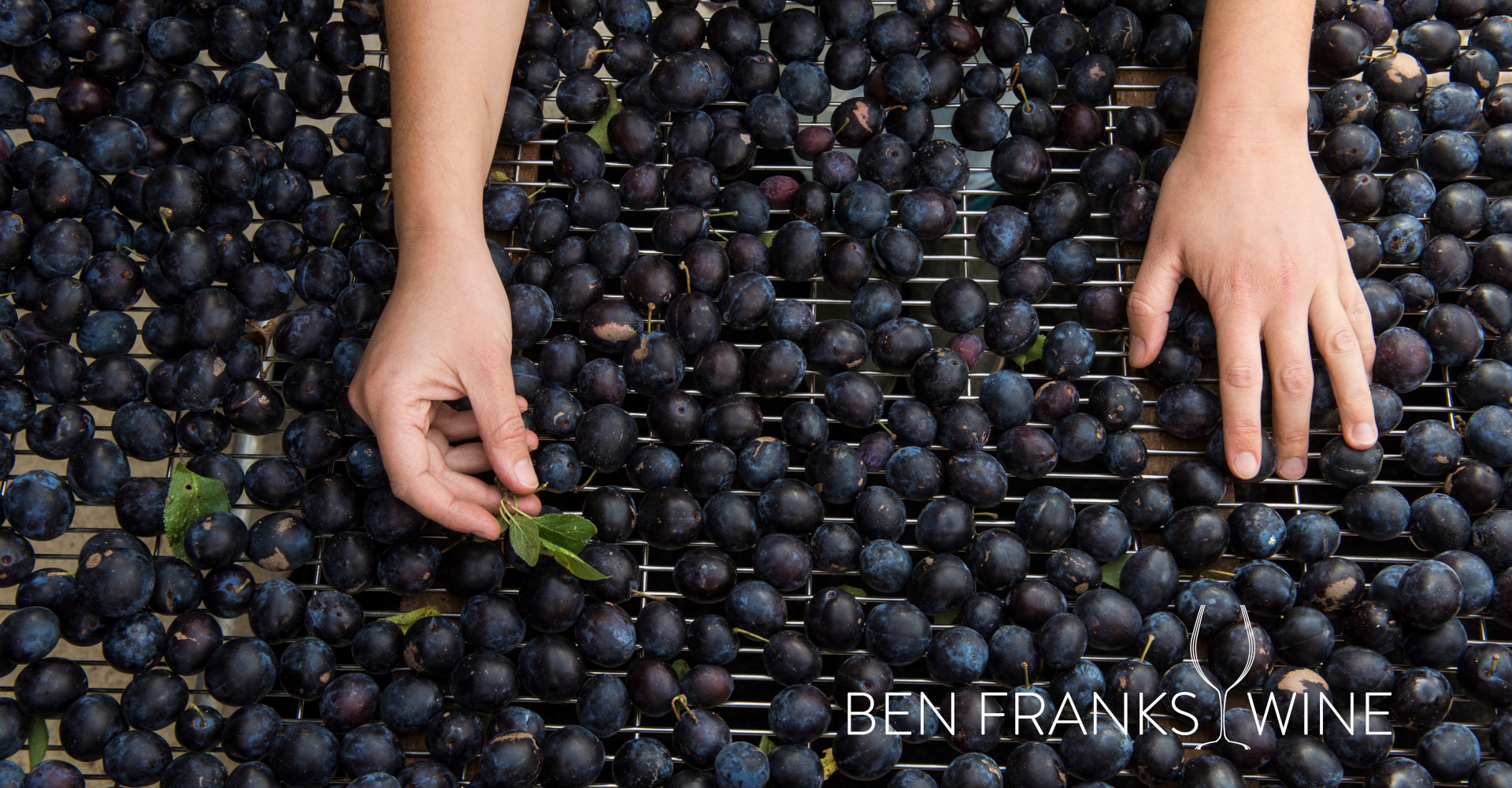
Hand sorting and grading damson fruit.
These fruits are then crushed and fermented. Barney used to look to places like Germany, which he describes as the ‘meccas of fruit spirits’, but today prefers wild fermentation and a natural, lower intervention approach.
‘These traditional fruit spirit producers tend to release spirits that have been very technologically made, so lots of cultivated yeasts, using enzymes to release primary aromas and to boost pumping. What we’re doing is something very simple.’
Production is intensive and the raw material resource is huge. Capreolus Distillery’s eau de vie is made entirely from the fruits’ natural sugars and make up the entire base wine that’s distilled, so it’s arguably a truer reflection of the fruit itself.
‘The more focused we are the more refined our eau de vie becomes and they reveal more and elevate more from the plant and the place its from. We compress huge amounts of fruit and retain its freshness but also its complexity and detail.’
A sense of place
This idea of terroir is a key point for Barney and many eau de vie producers around the world. This spirit, unlike vodka or gin, is all about its provenance, in a similar way to wine. But how does he pinpoint that in the flavour and style?
‘That’s a really interesting question because they’re all very different. You have something like a blackcurrant, which is really deep and spicy and herbaceous, compared to something like a raspberry, which is incredibly hedonistic and full. It’s hard to put a finger on the nebulous, but one way we could do is with climate. If you think Tyrol, or Wachau in Austria, where you might distil a riper fruit wine that’s 6% alcohol, it might be softer, versus our fruit with low sugar levels where you might distil from 3% alcohol to 40%. You start to taste that woodiness in there and more of a fingerprint of our area.’
All the eau de vie drinks Capreolous release are made from raw materials sourced in a 50 mile radius, showcasing the vibrant variety of flavours and fruits you can find in the Cotswolds region.
‘We end up elevating the things that connect you to the plant more,’ Barney explains, ‘so you actually start tasting the ripeness that reflects where we are, that greenwood style, or like with our raspberry eau de vie, where you have ten thousand seeds in a glass because there’s a kilogram of fruit that goes into that 25ml measure.

12.5kg of raspberries in one bottle of eau de vie…
‘I think you have a closer connection to the plant than just primary fruit flavours. These spirits are very concentrated but they’re not like classic Poire Williams that jumps out the glass and is big and artificial. We have very fine perfumes, very detailed and delicate aromas, which for me is more interesting.’
This nuance feels familiar to me in wine, where we might wax lyrical about wines that balance minerality and complexity over bold fruit and marvel at the way they open up. It seems it is not so different in Barney’s world, and he has certainly seen crossover with wine.
‘We work with lots of sommeliers so I’m always thinking about how I can relate these ideas back to wine terms. Do cool climate wines leap out of the glass? Not necessarily, but you can often dig deeper into them and find more, which I relate to.’
‘The magic of it is this tiny thread you’ve pulled out, something that’s absolute perfume.’
The eau de vie spirits at Capreolus are all triple distilled. Behind him while we chat is a steel tank containing low wines from 3000kg worth of fruit. The distillation pot stills are bespoke and purpose built, so there’s no manual, and that means making every cut for the heads and tails the old fashioned way: by standing there and tasting, tasting and tasting.
Barney’s pursuit for the finest expression of his fruit means only the hearts are preserved, and it hasn’t been unusual for him to be tasting over an 8 hour spectrum to know when to cut tails. Every distillation round Barney tastes and notes down.
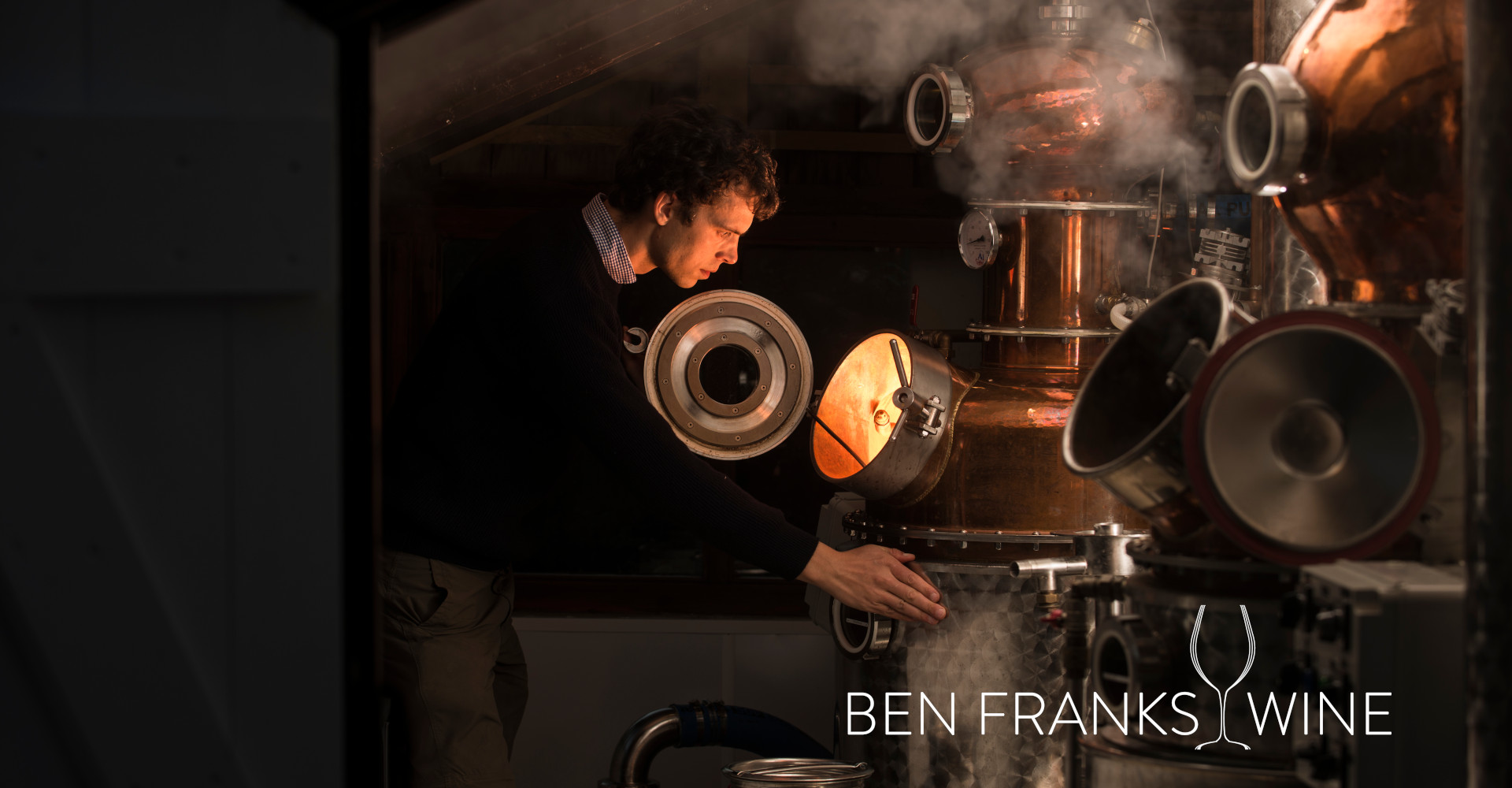
Barney with the stills
‘We have a tiny window really where the spirit is pretty, and we typically preserve 40-45% of the alcohol we started with. Most people recycle the heads and tails and keep over 90%. We don’t. It’s extreme but the magic of it is this tiny thread you’ve pulled out, something that’s absolute perfume. It might sound fanciful but when you’ve gone from 3000 litres of mashed up raspberries to 50 litres of eau de vie, the distillation strength is over 60kg to a litre. You’re drawing our like 2% of the fruit, the absolute essence.’
It has always been the overwhelming thing that has struck me about Barney. He is absolutely dedicated, perhaps obsessed, with this purity of character. And yet it is a beautiful thing. There is a raw connection there to the nature of the fruit itself, and a respect for – in want of a better word – its soul.
Barney compares this to his childhood.
‘Fruits for me are connected to places where we grew up. When you distil apples properly, they don’t just smell like apples, they smell like orchards in this area. That’s magical. I think I spent too much time watching things like Indiana Jones as a child and wanting this sense of alchemy and discovery. It really is that feeling where every fruit, like every variety of apple you discover, is really different.’
‘I don’t want innovation, I just want dedication.’
It is striking how confidently both Barney and his spirits convey this quality, sense of place, and essence of the fruit. I ask him if it’s always been like this from day one?
‘I was really lucky that in my former life I was a photojournalist,’ he explains. ‘I worked with lots of botanists around the world. All that time I had this slightly illicit hobby of distilling fruit for six or seven years and I grew interested in making high end ciders for myself, experimenting with méthode traditionelle and keeving, and so on. I thought, what happens if I start distilling this or that. I found there was no literature in English so I started teaching myself from Austrian text and these Eastern European type of papers -’
Hang on, I ask, you went that deep?
‘Yeah, slightly obsessive. You know, the lovely thing for me was those six or seven years wasn’t about giving it to anyone else but about me having kind of one or two superlative drinks a week. For years I made terrible spirits, but gradually got better and better. When it came to launch the distillery we’d just passed six years of so and I never thought anyone would buy English eau de vie.
‘We reproduced a gin with the similar complexity to what I love in eau de vie and suddenly I was talking to sommeliers about these things and they are, were and still are very personal spirits. You do everything for yourself and there are long days, sometimes 12 hours or so, and you’re not 100% and it’s not fun. I have still got a lifetime of improvement ahead of me and every year is my ‘better than’ year.’
If the spirits are going to get better than this, then we’re in for a real treat. These are some of the best eau de vie I’ve tasted anywhere in the world.
‘None of this is brain surgery,’ Barney says. ‘Yes you have one attempt and you just have to do everything with precision and care. I don’t want innovation, I just want dedication. It’s like in the wine world where you’ve had the same plot for 30, 40 years, and you really understand your fruit. It takes time and it’s incredibly demanding and that’s why there’s not many people doing this. It’s also really expensive.
‘Every 375ml bottle of our raspberry eau de vie has 70 punnets of raspberries, so that’s five punnets in each glass.’
It is easy to understand why these bottles cost anywhere between £60.00 and over £100. But how does he convince people to pay for them? In the UK, eau de vie is a niche drinks choice for most consumers and the idea of an after dinner digestif is something that most younger consumers have no interest in.

Apples used in the 1,000 Trees Apple Eau de Vie. Only the finest fruit.
‘When we first priced them I think I had £8 in my overdraft left,’ Barney says. ‘I couldn’t repay the last month’s rent and I priced them for what I imagined people, or I, would pay for them. Once I sat down a year or two later and checked to see if I could pay myself and make some profit, I realised, God, we’re losing money.
‘Today these spirits go to the Michelin end of restaurants where the price point is less of an issue. When I tell people how we make them they often go, Wow, those are incredible value! I learnt you shouldn’t undervalue your work, although realistically we should be charging a lot more money than we do, but when you’re doing something you love and you make a living out of it, that’s fun. We’re lucky in that way.
‘And you know, it does make sense to work with sommeliers who understand eau de vie, those who are coming from Eastern Europe, Germany, Austria, France, or Italy. They have a heritage of distilling fruits and they can justify the price.’
Eau de vie on the bar
While the spirits have found a place in restaurants, there’s also an interesting opportunity Barney is developing with top-end bars too, one of them being Seed Library in London who are combining Laurent Perrier Champagne with 2.5ml of Capreolus’ raspberry eau de vie.
‘That’s been amazing,’ Barney explains. ‘It’s all so concentrated and it’s been amazing to work with chefs and bartenders who understand the eau de vie can be used like a bitters to add accents to drinks.’
While many of Capreolus’ spirits focus on purity, Barney has also aged some of his spirit in wood. He explains that he has a funny relationship with barrels, steering away from oak and using classic Eastern European woods like mulberry, or working with chestnut wood. He has a barrel aged version of his gin matured in mulberry, for example.
‘I was doing it for myself and enjoying that. I guess it was influenced by Cognac, Calvados, Armagnac and things like that.
‘When it came to the chestnut wood for the apple eau de vie, it was just so damn delicious I couldn’t not make it. I love it. The problem we face with barrels always is that they give but also take away and it depends what you’re aiming for as a producer. We used to do more barrel ageing when we started, and I have 600 bottles of Tokaj Yatsu plum eau de vie that I think is so easy and delicious I’m not sure I’m ever going to release it. All my eau de vie are aged for at least 9 months in bottle, sometimes several years, whether they see oak or not, and I think they get finer and more palatable. Wood ageing can sometimes round off some of the diner detail and while they’re very palatable, the thing that really excites me is the fruit.’
It’s clear that Barney’s passion is in the discovery. While the alchemy of wood ageing is enjoyable, his range is focused on the purity of the fruit and the place it’s from.
‘I think we lack the intelligence to create something which is more complex than nature can produce. You have to pull your ego in for a moment and accept your own limitations and just try to record that thing, that one amazing thing, and you’ve worked to that point that’s hard to describe.

The 1,000 apple tree orchard
‘I remember tasting one of the eau de vies with somebody and she started crying. She said: “I’m so sorry, but this took me back to 1976 when my family and I stayed on this fruit farm. We’d be picking fruit like this and it would smell just like that.” It’s such a strong connection.’
I ask where Barney would scale production to, if he could. What’s next?
‘I realised there’s certain products you can’t make in scale. I used to apologise for the scale we were at, when you’re throwing so much out and it’s just heartbreaking. There’s a very limited amount of top quality fruit you can actually buy and we purchase fifty tons but make only 5,000 bottles of 375ml a year. In a production world that’s crazy. I sometimes describe these eau de vie as the Faberge Eggs of spirits because they’re very precious and hard to make. They are from expensive materials.
‘At the end of the day if you’re going to put your money down, don’t buy something crap. Buy a smaller amount of something good, something that someone’s put everything into and actually feels like an incredible experience. That’s then an easy choice.’
Capreolus Distillery Eau de Vie – where should you start?
Many thanks to Barney for kindly gifting samples of his eau de vie to try. I had a very enjoyable afternoon in the sun sipping through the range. You can find my tasting notes below and click through for more detail, should you wish to learn more.
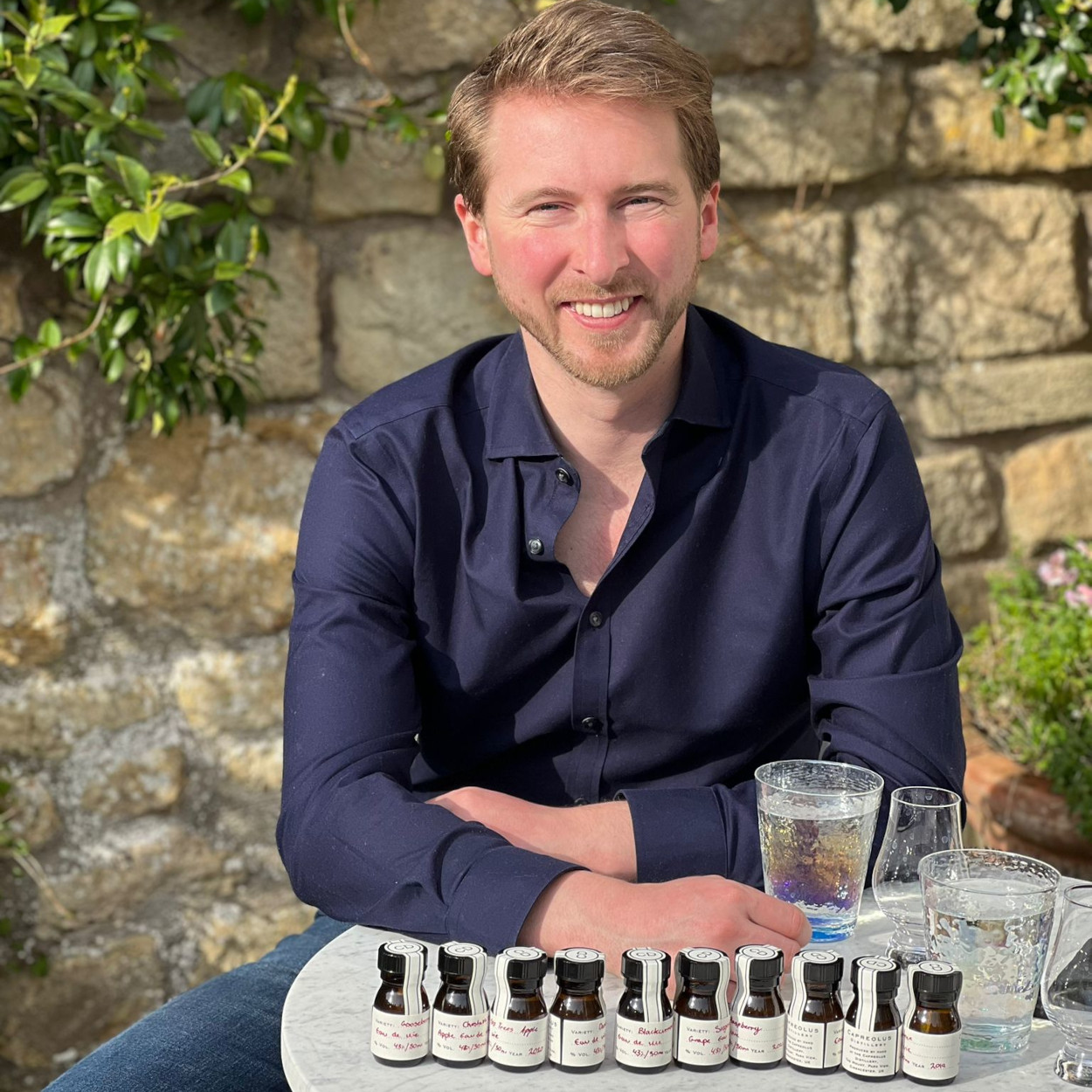
2018 Siegerrebe Grape Eau de Vie 43.0% abv – ★* Sweet, floral aroma layered with sugar syrup, kernel, stone fruits, orange, green plum and grapey fruits. A fruit salad on the palate with black liquorice, perfume, peach, and a bright finish. Almost icing-like in intensity but bright, raw and dry in character. Interesting! £60.00, 37.5cl
2019 Bacchus Grape Eau de Vie 43.0% abv – Fragrant, almost soapy nose that is immediately varietal in character, reflecting the English Bacchus grape. A mix of elderflower and kernel tones blend across a green, sappy palate. One for the Bacchus die hards! £60.00, 37.5cl
2020 Quince Eau de Vie 43.0% abv – ★★★ Beautifully poised nose of quince fruit and sweet boot polish over orchard fruit coulis. Succulent, smooth and punchy palate with tight acidity. Bursts with quince jelly and orange to finish. Long and pure. This is insanely good. £105.00, 37.5cl
2021 Perry Pear Eau de Vie 43.0% abv – ★ Very light nose of white pear, wheat, red fruits and lime sweets. Lightweight and incredibly fresh on the palate with soft notes of pear. Juicy and refreshing, and again very pure! £60.00, 37.5cl
2020 1,000 Trees Apple Eau de Vie 43.0% abv – ★★★ Toffee apple and caramelised orchard fruits like nose bursting with red apple and warming spice. Buttery pastry, apple skins, orange-like citrus, and dried apple. It lingers with deep, warming, almost sensual character. Long and soft in the mouth. £60.00, 37.5cl
2018 Chestnut Barrel Aged Apple Eau de Vie 43.0% abv – ★★ Dense chestnut wood, cherry sweets, varnish and pink lady apples make up an intense and bold nose. On the palate a sweet, spicy vanilla character sits behind apple, soft toffee, tonka bean, apple chews and candy peel. Changes with every sip. A storyteller in a bottle. £60.00, 37.5cl
2021 Gooseberry Eau de Vie 43.0% abv – ★ Aromas of green Prosecco, berry skins, earthy and nettle notes with pops of sweet citrus and lemongrass. Bright and pinched on the palate, almost a touch tropical, with ripe green notes on the finish. Long and lasting. £125.00, 37.5cl
2021 Raspberry Eau de Vie 43.0% abv – ★★★ Wow! Full of raspberries immediately; think bramble and coulis. Almost deep like liqueur on the palate with wonderful purity. Citrussy, layered, perfumed. Eton mess-like creaminess. Packed with fruit flavour. £125.00, 37.5cl
2019 Blackcurrant Eau de Vie 43.0% abv – ★ Deep, earthy, almost damp nose. Intriguingly savoury. Much jammier on the palate with dark fruits and pomace-like texture. This one grows on you. £125.00, 37.5cl
2019 Damson Eau de Vie 43.0% abv – ★★★ Another star. Plums, figs, spice and fragrant perfume make up the nose. It’s gloriously soft yet tangy on the palate, brimming with fig rolls, biscuit, sponge, honey, plum. Deep, full and magnificent.
Buy Capreolus Distillery Eau de Vie online from their website here.
*Read how my BFW ratings work here.





